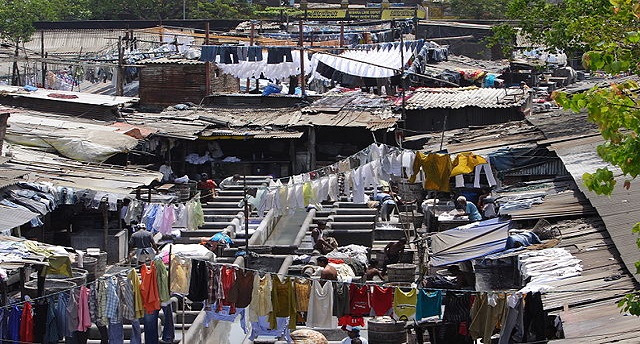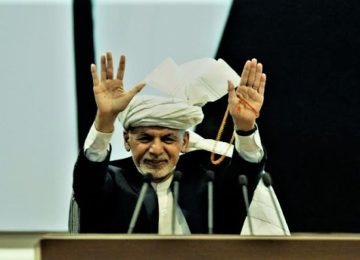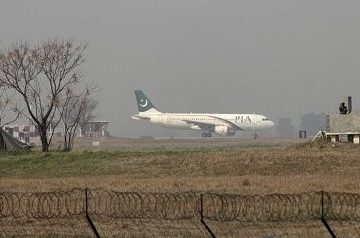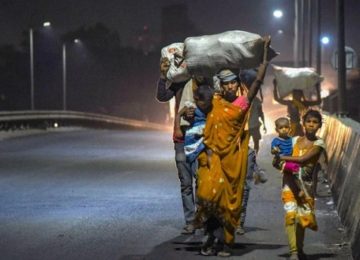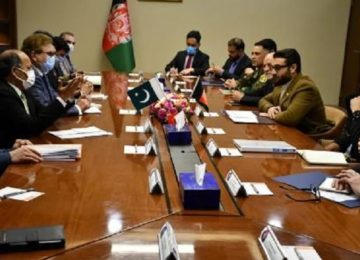January 05, 2018
A look at the poverty statistics of India, Afghanistan & Pakistan shows the need for the trio to launch a joint offensive against the common menace of poverty in South Asia rather than squandering resources on the perpetual cycle of violent conflicts.
The deadly triangle of Pakistan, Afghanistan and India’s perpetuating tensions is proving to be detrimental for the future of the region, especially in view of the fact that the biggest chunk of global population also lives in this region. Any positive attempt for normalising Pak-Afghan bilateral relations is clouded by Indian influence or a deadly terrorist attack in either of the two countries, disrupting the peace process. The strong perception that a section of the Afghan security establishment belittles anything positive as far as Pakistan is concerned, has apparently taken a backseat recently.
This has become possible by the recent positive development practically materialising in Pak-Afghan relations, since Pakistan’s Army Chief’s successful visit to Kabul a few weeks earlier where he proposed a comprehensive joint mechanism in a few major areas of cooperation. The proposal by Pakistan is so far positively acknowledged by the Afghan side. However, on the other hand, Pakistan’s wish for peace with India continues to be snubbed by the extremist Hindutva ideology that penetrates deep into the Indian establishment.
As a result, South Asia is one of the most volatile regions across the globe. While conflicts in Afghanistan and Pakistan have attracted sufficient global attention, India, too, has had its fair share of long-running strings of conflicts, whether it is in Kashmir or the Khaalistan movement, resulting in human misery, destruction of infrastructure, erosion of social cohesion, and loss of human lives. The knock-on effects are huge and a by-product becomes poverty, which furthers conflicts making the cycle go on.
While all states have conflicts; as it is inherent to politics, the divergence of Pakistan, Afghanistan and India in their interests takes significant resources and focus away from the real ills that lie within these nations.
Looking at the poverty statistics of India, World Bank, in its Poverty and Shared Prosperity 2016 report, noted that amongst the total poor population across the globe, every third person is an Indian. The point of concern here is that extreme poverty worldwide is taking a dip despite the global economy’s under-performance. “India is by far the country with the largest number of people living under the international USD 1.90-a-day poverty line, more than 2.5 times as many as the 86 million in Nigeria, which has the second-largest population of the poor worldwide,” the report states. The actual number of Indians living below poverty line is reported to be 224 million, making it 30% of the total Indian population.
In Pakistan, too, Ministry of Planning Development and Reforms in recent months informed the Senate of Pakistan that about 29.5 per cent of the country’s population – encompassing about 55 million people, is living below the poverty line. The calculations are done by using the latest available estimates of Household Integrated Economic Survey data (HIES) 2013-14. The Cost of Basic Needs (CBN) method determines the poverty line by using minimum consumption bundle comprised of food and non-food essential consumables necessary to live. This poverty line translates into a monthly Rs. 3,030 per adult to cater his basic needs.
The poverty rate in Afghanistan is currently at 39 percent, accounting for all Afghan citizens living below the poverty line. This implies that one third of the Afghan population is unable to satisfy their basic needs. This high poverty rate is not only the 3 per cent upsurge from 2011 to 2012, but it is also demonstrative of the 15 years of economic and social progress that is increasingly vulnerable in the war torn country. According to the World Bank’s Poverty Status Update Report, since the beginning of the withdrawal of international forces in 2011 and of the political transition period, Afghanistan has suffered declining security and employment opportunities despite economic growth at aggregate level. One of the key reasons report stated for the increased poverty rate is significant decline in labor market conditions, a setback that hurts rural and youth populations the most. Rural poverty increased by 14 percent between 2011 and 2014, while urban poverty remained unchanged.
Pakistan has shown fine commitment in dealing with extremism and terrorism and in the backdrop of CPEC, it is also determined to use its strategic position positively in the emerging regional connectivity. Although Indian Prime Minister Narendra Modi openly opposed CPEC, Pakistani and Chinese leadership is determined to engage the South Asian states including India for the prosperity of entire region.
The economic connectivity would undoubtedly help in swapping the animosity with the friendly neighbours. Islamabad is encouraging the neighbouring states to invest in CPEC projects. Definitely, the neighbouring states’ investment enriches the significance of the project but it also has fruitful impact on investors’ economies and thus can pull their population out of extreme poverty as evident by the Chinese experiment. It is a catalytic project that will help the regional countries form a conglomerate for their geo-economic interests. The corridor also represents Pakistan’s and China’s commitment to fashion a win-win partnership that threatens none and benefits all. Precisely, CPEC would have dividends for the entire region.
Thus, economic policies should be triggered not just to maximize economic growth, but also to address the distributional or political factors that led to the conflict. Policy choices must be structured to reduce real or perceived inequality. Cross-border cooperation between Pakistan, Afghanistan and India should be an integral part of any strategy to reduce conflict. Many of the internal conflicts in South Asia have cross-border dimensions. Going forward, regional cooperation initiatives, which have so far been underused, are likely to be important in countering terrorism. The trio should follow the global shift from geo-politics to geo-economics and fight together the common enemy of poverty.
In attaining such goals, Islamabad, Kabul and New Delhi should complement each other rather than negatively compete with each other. With that, it is also the time to realize that we live in a post-super power world, and it is not possible for any one country to rule the world or an entire region. The contemporary times call for cooperation and reaping the benefits that come from economic connectivity and integration. South Asia’s real competition should not be augmenting rivalries between its states but against the mutual concern of growing poverty.
The author Saddam Hussein is a research fellow at the Center for Research and Security Studies (CRSS), Islamabad. He graduated from School of Economics, Quaid-i-Azam University (QAU), Islamabad.
© Center for Research and Security Studies (CRSS) and Afghan Studies Center (ASC), Islamabad.



